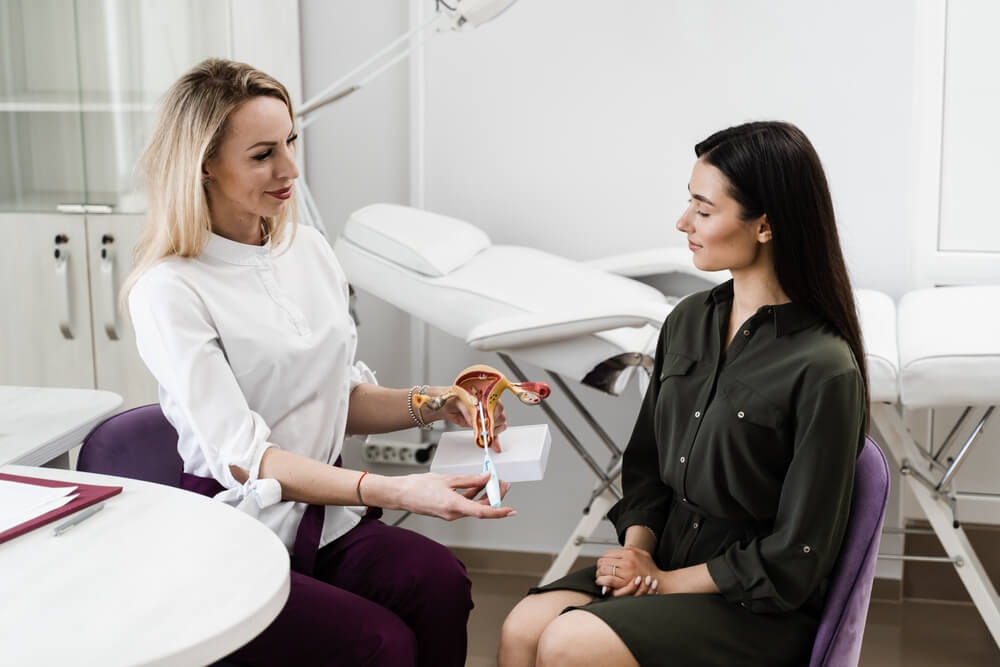In the realm of contraception, Paragard stands out as a beacon of reliability, offering an effective and hormone-free solution for those seeking long-term birth control. In this in-depth exploration, we delve into an exploration of the copper IUD, shedding light on all aspects of Paragard—its mechanism, insertion process, benefits, and unique features.
Contraception counseling should be one of the most crucial steps you have to take when you decide you want to become sexually active. Medical experts are there to support you and make sure you are protected in more ways than one. In order to ensure optimum protection and safety, request an appointment now and find out why it is so important to have a professional on your side when it comes to the topic of reproductive health.
The Copper IUD
The Copper Intrauterine Device (IUD) stands as a remarkable contraceptive option, offering a hormone-free and highly effective means of preventing pregnancy. Shaped like a small, flexible T, the copper IUD is crafted with a coating of copper—a feature that distinguishes it from other intrauterine devices. Its ingenious mechanism involves creating an environment within the uterus that is inhospitable to sperm, preventing fertilization, and inhibiting the implantation of a fertilized egg.
This unique non-hormonal approach is a game-changer for individuals seeking birth control without the associated hormonal side effects. With a lifespan of up to 10 years, the copper IUD provides long-term contraception and offers a rapid return to fertility upon removal. The simplicity of its design, coupled with its efficacy, makes the copper IUD a compelling choice for those who desire a reliable IUD without hormones as their chosen contraceptive method.
How Does a Copper IUD Work?

The answer to the question of how a copper IUD works can be answered from different perspectives.
The copper Intrauterine Device (IUD) operates through a fascinating and effective mechanism that sets it apart from other contraceptive methods. Comprising a T-shaped frame with a coating of copper, the device harnesses the natural spermicidal properties of this metal. Once inserted into the uterus by a healthcare professional, the Copper IUD serves a dual purpose in preventing pregnancy.
Firstly, the copper IUD creates an environment hostile to sperm, hindering their ability to reach and fertilize an egg. Secondly, it interferes with the implantation of a fertilized egg, further fortifying its contraceptive efficacy. This distinctive non-hormonal approach makes the copper IUD an excellent choice for individuals seeking contraception without the hormonal side effects commonly associated with other birth control methods. Its long-lasting effectiveness, with protection lasting up to a decade, adds to the appeal of this ingenious device.
Copper IUD Insertion: What to Expect?
The process of getting a copper IUD, commonly referred to as Paragard, involves a simple yet precise medical procedure. Here is a step-by-step guide:
- Consultation and Assessment: The process typically begins with a consultation where your healthcare provider will discuss your medical history, assess your suitability for the Copper IUD, and address any questions or concerns you may have.
- Pelvic Examination: Before the insertion, a pelvic examination is conducted to evaluate the position and size of your uterus. This step helps determine the appropriate size of the Copper IUD for optimal placement.
- Counseling and Informed Consent: Your healthcare provider will provide detailed information about the Copper IUD, its benefits, potential side effects, and the insertion procedure. Informed consent is obtained before proceeding.
- Preparation: You will be asked to lie on the examination table, similar to a pelvic exam. Your healthcare provider will then cleanse the cervix and vagina to minimize the risk of infection.
- Cervical Dilatation (if necessary): In some cases, especially if it’s your first IUD insertion or if you haven’t given birth, the healthcare provider may use a dilator to gently widen the cervical opening, facilitating the insertion process.
- Insertion of the Copper IUD: The healthcare provider uses a specialized inserter to carefully place the copper IUD through the cervix and into the uterine cavity. Some individuals may experience mild discomfort or cramping during this step, which is normal.
- Verification of Placement: After insertion, an ultrasound or pelvic exam may be performed to confirm the correct placement of the copper IUD within the uterus.
- Post-Insertion Instructions: You will receive instructions on what to expect after the procedure, including common side effects such as mild cramping and spotting. Your healthcare provider may also schedule a follow-up appointment to ensure the IUD remains in the correct position.
- Monitoring and Follow-up: It is essential to monitor your well-being following the Copper IUD insertion. If you experience severe pain, heavy bleeding, or any unusual symptoms, contact your healthcare provider promptly. Follow-up appointments may be recommended to assess your comfort and the device’s proper functioning.
Some individuals may experience mild discomfort or cramping during and after the procedure, but these sensations are usually temporary. Remember, individual experiences may vary, and open communication with your healthcare provider ensures a smoother and more comfortable copper IUD insertion process tailored to your specific needs.
Benefits of Paragard Copper IUD
Here are some of the main benefits of Paragard:
- Long-Term Contraception: With a lifespan of up to a decade, Paragard offers one of the longest-lasting contraception solutions available.
- Hormone-Free: For those who prefer avoiding hormonal methods, Paragard provides a hormone-free alternative, eliminating concerns about hormonal side effects.
- Rapid Reversibility: Unlike permanent sterilization methods, the effects of Paragard are rapidly reversible upon removal, allowing for fertility to return promptly.
- Immediate Effectiveness: Once inserted, Paragard begins providing immediate protection against unintended pregnancies.
IUD Without Hormones: A Game-Changer
In a world where hormonal contraceptives dominate the market, Paragard emerges as a game-changer by offering a non-hormonal alternative. This distinction is particularly crucial for individuals who may experience adverse reactions to hormonal birth control methods, such as mood swings, weight gain, or diminished libido.
The absence of hormones also makes Paragard an attractive choice for those with certain medical conditions that may contraindicate hormonal contraception. It provides a reliable option for individuals seeking effective birth control without the influence of synthetic hormones on their bodies.
Common Concerns and Myths

As with any contraceptive method, misconceptions and concerns often arise. It is important to address common myths associated with the copper IUD to provide clarity and alleviate potential apprehensions.
- Increased Menstrual Bleeding: While some individuals may experience heavier periods initially, this side effect often diminishes over time, and not everyone will notice a significant change in menstrual flow.
- Pain During Intercourse: Properly placed copper IUDs should not cause pain during intercourse. If discomfort arises, it is essential to consult with a healthcare provider to ensure correct placement.
Conclusion
In conclusion, Paragard Copper IUD stands as a beacon of choice for individuals seeking effective, long-term contraception without the influence of hormones. Its unique mechanism, coupled with the convenience of a decade-long lifespan, makes it a compelling option in the realm of birth control.
Whether you are considering your contraceptive options or seeking an alternative to hormonal methods, Paragard stands out as a reliable and hormone-free choice. As with any medical decision, consulting with a healthcare professional is crucial to determine the best contraceptive method which will be based on individual needs and preferences.
If you need more assistance and help, feel free to contact us today!


